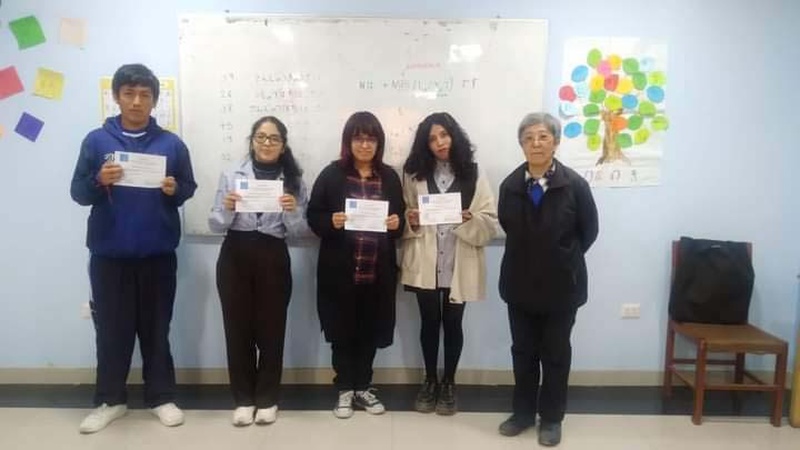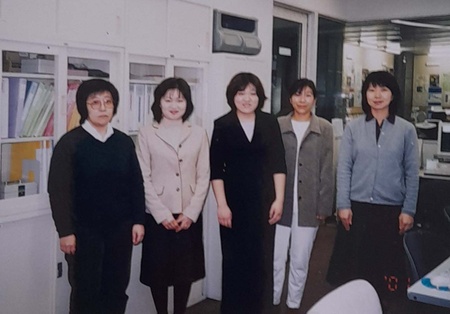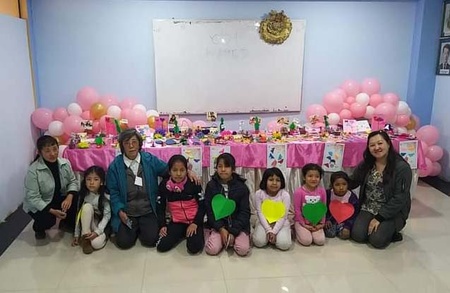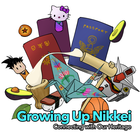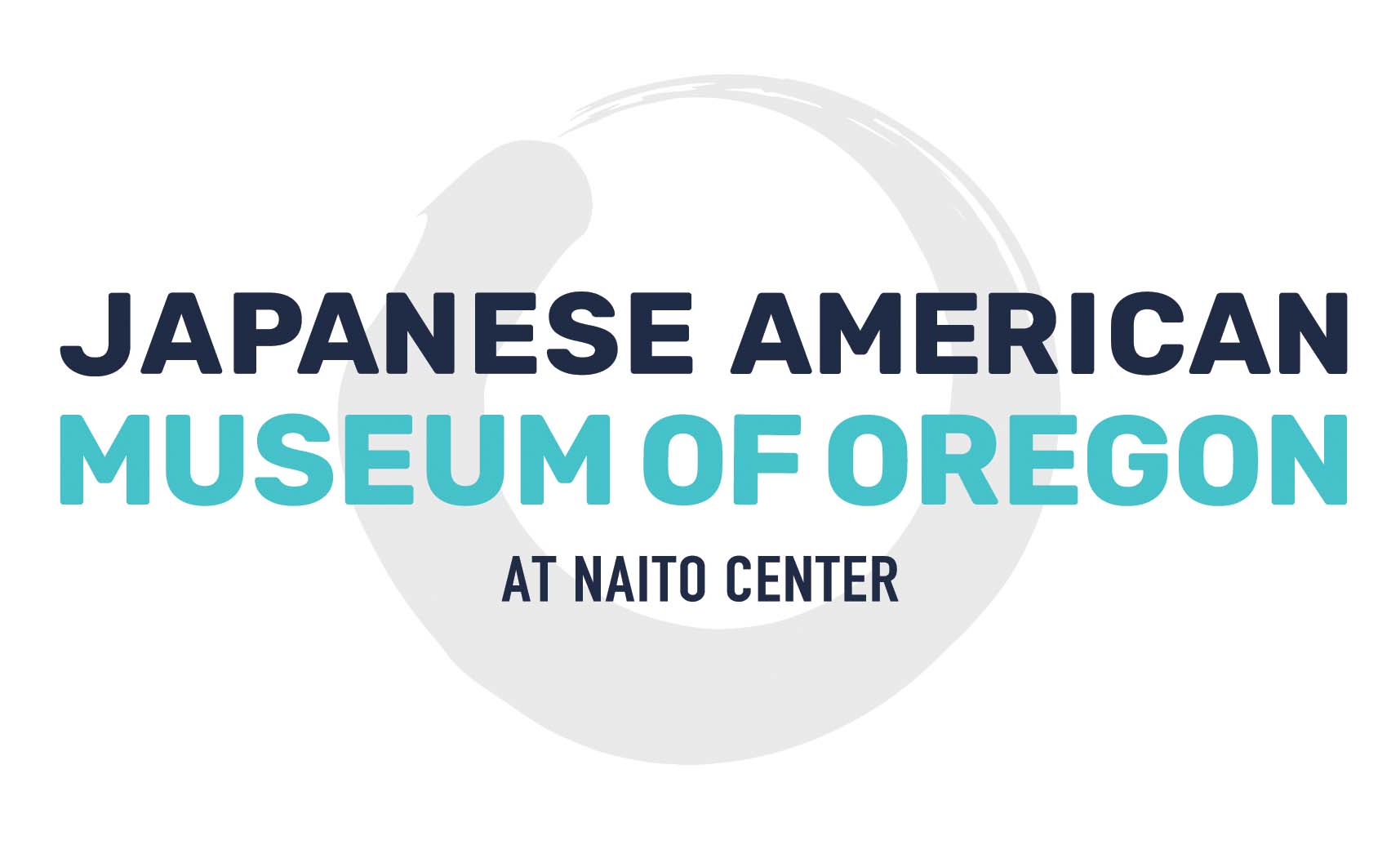My name is Gaby Kutzuma Sameshima, I was born in Huancayo, Peru, from the first and last name you will deduce that I have Japanese ancestry. I'm actually third generation Nikkei. My parents are children of Japanese who emigrated to Peru.
I received an education in Peruvian schools and the vast majority of my friends from that time are Peruvian. But I always felt that home education and family relationships were very different from relationships with friends at school and their environment. I didn't really think about what that different “ worm ” was.
And so my childhood and youth passed, until, during my university days in the city of Lima, I arrived at CNES 1 , an institution where the majority were, thought and felt like me. And coexistence felt more comfortable in this environment where there was no need to explain certain customs or why you do this or that thing; where you eat onigiri without having to explain what that black thing you eat is. Previously, my friends at school called it “gutta-percha” 2 . That medium was the Nikkei society .
I started to wonder what it was like to be Nikkei at that time. The answer was: I am of Japanese descent, only I was born in Peru. And I identified more towards the Japanese side than towards the Peruvian side. Due to various customs, food, family relationships and the protocols that I have to comply with, the discipline and rigor on the part of my ojichan . But I also have a part of Peruvian style that I still didn't identify very well.
I was presented with the opportunity to go on a scholarship to Okayama University in Japan, where I studied Japanese economics and the Japanese language. I was able to learn about my origins, where my grandparents were from, and thus be able to understand and explain certain customs and protocols that the family and Nikkei society in general had.
Here I found more doubts regarding what sernikkei is, since being in Japan I was treated as a “foreigner” not as a descendant of Japanese. So what is it to be Nikkei?
During the scholarship I was very busy with my studies and trying to assimilate what Japan was as much as possible. The year ended and I returned to Peru with many questions. I decided to return to Japan, study the language better and in this way be able to understand this sometimes complicated society.
Studying nihongo is the main door to the answers I was looking for. Studying a kanji explains many things about Japan. They will say: “but it's just a letter.” Actually, that's not the case, that single letter can explain a lot of things.
Japanese has an order and, behind what is transmitted, a philosophy. It is a language that tries to preserve “harmony within society.” If you are going to say “no”, you will do it in the most polite and delicate way possible. Without saying “no” directly, so as not to break the harmony of the group, something that we Latinos are not used to.
These situations were taught to me by working as an interpreter. So first I listened to the Japanese who gave many thoughts and reasons to say “there is no work.” When translating, he told the Latino a “no” because if he explained it like the Japanese said, the Latino thought that he would have the opportunity for a job.
Another example is regarding how to take out the trash. We must convey to the Latino: “it is prohibited to take out the garbage after hours. “You will be fined for doing so.” The Japanese says: “we kindly await your collaboration, please take out the garbage at the corresponding time.”
If we put up a sign like that, the Latinos would not respect the order. This is one of the many differences between our societies. And maybe there are things that influence our way of being Nikkei.
During my second 20-year stay in Japan, working with the Japanese at the Aichi International Association, I learned a lot about what the job is like, the value of planning ahead and problem-solving, and even how protocols and procedures are handled. negotiation rules that are very different in Peruvian society.
Within this institution I was a consultant for foreigners and I was able to better visualize our differences and how to try to reconcile with both parties. I understood that processes are more important and that results are the answer to a good process; something that is not the case in the Latin part, here the results are graded.
I learned that the Japanese language varies according to the medium in which it is spoken, that there are ranks within society that are faithfully respected. That experience is valued almost like a doctorate.
I could summarize my answer to what it means to be Nikkei as follows: we have two towns separated by a river and a bridge that connects them. At first I was in a town and I had the opportunity to cross the bridge and go to the other town with customs, way of thinking and language, very different from those I had been using until now.
I felt fine in either town, but I finally discovered that staying in the middle of the bridge might be the most comfortable. But, the truth is that this does not allow us to move forward, so I decided to load and carry my luggage with the good things of the two towns and get on a boat to continue along the river and continue growing.
In moments I will be on a shore if necessary to stop and then continue. And change to the other shore according to circumstances. Now I think I am in a port trying to convey the good things that both towns have.
That is why I decided to carry out the Sakura Wanka Japanese Culture and Language Center. Our Huancaí society is thirsty to learn from other cultures and get ahead. I think I can contribute to it, which is also part of my gratitude to Japan, which has given me a lot in professional and personal growth.
I hope to leave something of value in Huancaí society. And finally: What does it mean to be Nikkei? My answer would be that I am not from here nor am I from there, I am a new generation of the world and I proudly carry the two cultures that formed me as a person.
Sakura Wanka: an answer to what is it to be Nikkei?
It is a project that is born from the concern of what it means to be Nikkei.
To be Nikkei is to conserve and keep alive our Japanese and Peruvian essence.
The Japanese part is being lost and it is necessary to preserve those values that our ancestors brought and that are still maintained in current Japanese society.
For me, these values are the most important thing about Japanese culture, much more than its technology and economic situation; These are material things resulting from his philosophy.
Respect, being honest, punctuality, being a reliable person, seeking continuous improvement and the philosophy of life of this society must be disseminated to our Peruvian society, especially in the Mantaro Valley, not only to Nikkei youth but to society in general.
Seeing these current shortcomings, we saw the need to create a point from which we can disseminate and project ourselves to society with the participation of all those interested in Japanese culture, especially young people.
Initially we will start with the Japanese language to bring young people closer to Japanese culture. We have planned workshops not only about crafts. We want, first of all, workshops on “Continuous Improvement” in the personal aspect. If you grow as a person, everything around you will grow positively, developing your environment. This is currently lacking in society.
We have planned workshops on “Japanese 5S”, “Wabi Sabi” and others that we will disseminate later. These topics have the essence of Japanese philosophy and culture and will explain many important points to us. We need Nikkei young people to help us spread those customs that they still maintain at home, to learn other values and to feel proud of being Nikkei. In this way, Sakura Wanka will become a starting point to improve our coexistence between the two cultures.
Grades:
1. Nikkei Center for Higher Studies.
2. Black electrical tape made of rubber used in electrical work.
© 2023 Gaby Kutzuma Sameshima


